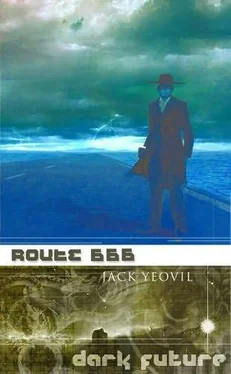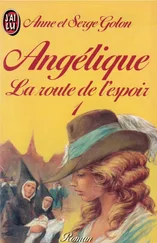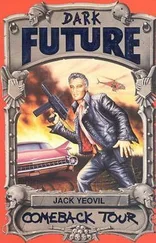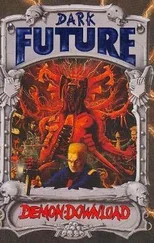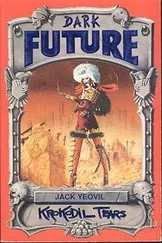Jack Yeovil - Route 666
Здесь есть возможность читать онлайн «Jack Yeovil - Route 666» весь текст электронной книги совершенно бесплатно (целиком полную версию без сокращений). В некоторых случаях можно слушать аудио, скачать через торрент в формате fb2 и присутствует краткое содержание. Жанр: Фантастика и фэнтези, на английском языке. Описание произведения, (предисловие) а так же отзывы посетителей доступны на портале библиотеки ЛибКат.
- Название:Route 666
- Автор:
- Жанр:
- Год:неизвестен
- ISBN:нет данных
- Рейтинг книги:3 / 5. Голосов: 1
-
Избранное:Добавить в избранное
- Отзывы:
-
Ваша оценка:
- 60
- 1
- 2
- 3
- 4
- 5
Route 666: краткое содержание, описание и аннотация
Предлагаем к чтению аннотацию, описание, краткое содержание или предисловие (зависит от того, что написал сам автор книги «Route 666»). Если вы не нашли необходимую информацию о книге — напишите в комментариях, мы постараемся отыскать её.
Route 666 — читать онлайн бесплатно полную книгу (весь текст) целиком
Ниже представлен текст книги, разбитый по страницам. Система сохранения места последней прочитанной страницы, позволяет с удобством читать онлайн бесплатно книгу «Route 666», без необходимости каждый раз заново искать на чём Вы остановились. Поставьте закладку, и сможете в любой момент перейти на страницу, на которой закончили чтение.
Интервал:
Закладка:
In music, the decade saw the withering of American dominance in the wake of the rock 'n' roll riots of 1961. Followers of evangelist Jimmy Swaggart clashed with those of DJ Alan Freed at Madison Square Gardens, New York. Among the thousands left dead by morning were Chuck Berry, Jackie Wilson, Little Richard and Freed himself. A family footnote was the tragic, permanent crippling of the Reverend Swaggart's cousin, Jerry Lee Lewis.
In the wake of the Tin Pan Alley Self-Regulation Codes, names like Elvis Presley and Carl Perkins disappeared from the jukeboxes, remembered only by a rising generation of Russian children who, energised by the anti-war movement of the late '60s, would transform the American rhythms of the '50s into the all-powerful Sove Sounds of the 70s and beyond.
These were the years of the British Invasion. The Liverpool Sound came to America, represented by Ken Dodd's first international million-seller, "Tears (for Souvenirs)". American artists were fast to react and soon Fabian Forte, Jan and Dean and Gracie Wing were covering the hits of Matt Monro, Mrs Mills and Valerie Singleton.
America's teenagers embraced the Brits but found a place for their own idols. The President, admitting he owned every disc Pat Boone ever cut, commended the music industry for championing decent young citizens whose example in moderate behaviour, modest dress and fetching hairstyles was eagerly copied by adoring fans. The President even confessed one or two "race records" had caught his fancy, reserving especial praise for Diana Ross's interpretation of Rolf Harris's "Sun-a-Rise".
Sizzling Sixties Top Ten: 1961: "(I Love, I Love, I Love, My Little) Calendar Girl", Neil Sedaka; 1962: "Love Letters (Straight From Your Heart)", Marilyn Monroe; 1963: "Happiness, Happiness (The Greatest Gift That I Possess)", Ken Dodd; 1964: "Shout", Valerie Singleton; 1965: "It's Not Unusual", Norman Wisdom; 1966: "Theme From Star Trek", The Billy Cotton Band; 1967: "(It's a Treat To Beat Your Feet on the) Mississippi Mud", James M. Hendrix and the Merry Minstrels; 1968: "White Horses", Jacky; 1969: "Hooray for Nixon", Cherilyn LaPierre; 1970: "(I Did It) My Way", Ken Dodd.
At this point, should you wish to further your intimate relationship with the lovely Lola, please press the PAY button on your remote, and attach the milking sleeve as shown in the diagram provided. ZeeBeeCee takes no responsibility for coronary ill-effect or electrical discharges caused by faulty wiring or overuse of this consumer function. If in doubt, consult your family doctor…
While the '10s were marked by War and Revolution, the '20s by racketeering and bathtub gin, the '30s by Depression and the New Deal, the '40s by World Conflict and Swing, and the '50s by the dread shadow of the unleashed atom, no decade before or since has seemed so uncomplicated and peaceful to the great mass of the people of America as the 1960s. There were overseas wars, but America was merely a mournful, helpful observer, consistently intervening in futile attempts to find common ground between combatants.
After 1961, there were no more riots among the young, the happy racial minorities, or the working man. 1969 saw the great Peace March – lead by the Reverend Martin Luther King, Senator Lyndon Johnson and John Wayne – which gathered outside the Washington consulates of the Soviet Union and the Republic of China. Similar marches in Moscow and Peking were not as peaceful; the death toll of that day will probably never be known.
Employment held steady, rates of divorce and suicide plunged, American industry launched countless successful products – typified perhaps by the most popular car of the 1960s, the Ford Edsel – and the nation's position in the world was paramount.
Alfred E. Neuman: What, me worry? I drive an Edsel!
Truly, the 1960s were the American Decade, and the Man of the Solid '60s was Richard Nixon, the only First Executive ever to have co-hosted Your Show of Shows with Milton Berle and Chevy Chase. President Nixon, that wise old bird, resisted calls that he share with FDR the opportunity of running for a third term. With typical good humour, he claimed he could make far more money from books and lectures after his retirement than he ever could in the White House.
President Nixon: Pat deserves a new coat and Checkers II is looking forward to the California sunshine.
Who can forget the spontaneous demonstrations of loyalty that erupted throughout the country in 1968, as the presidential campaign took on the good-humoured air of a festival? In Chicago, the Democratic Convention was invaded by pranksters of the "Why Bother?" faction, encouraging delegates not to tinker with success and admit that the party of opposition could not hope to compete with the administration.
Even losing candidate Hubert Humphrey, polling proportionately fewer votes than any second-placer in history, was able to laugh off defeat with an admission that he didn't envy Barry Goldwater the job of following a fighting Quaker saint in the White House.
That year, John Kennedy, the forgotten man of American politics, remarried, not to the blonde goddess whose wiles had ruined his chance for the presidency in 1960, but to Mia Farrow, youthful star of the summer's heart-warming hit motion picture, And Rosemary's Baby Makes Three.
Amid the hilarity and fellow-feeling, one should remember Nixon the Statesman. The triumphs of the Nixon Presidency were epitomised by his swift intervention in Cuba in 1962, providing air support for democratic rebels who overthrew the short-lived regime of the mad tyrant, Fidel Castro. Here we see American offshore interests triumphant in 1963 as businessman Samuel Giancana reopens the Club Whoopee, Havana. That noise you hear has been identified as the happy popping of champagne corks.
Also, Secretary of State Hoffa presided over the removal of many restrictions which threatened to impede the progress of American industry, granting rich government contracts to the technocrats who steadfastly worked in the space programme. Here, reactionary Ralph Nader slinks away from a congressional committee after the decisive defeat of his Slow Down Emissions recommendations, which would have cut American output by up to 50 per cent.
After deliberating the findings of a committee chaired by Governor George Wallace, the president adopted the policy of Separate But Equal Development in education, housing and employment, ensuring unprecedented racial harmony in the South. The amusing shoeshine boy seen here 'accidentally' spilling polish over Governor George's white pants-cuffs has been identified as a Mr Malcolm Little, who seems, quite sensibly to judge by that grumpy look on George's face, to have disappeared from history soon after this candid footage was shot.
In 1961, everyone went to the movies and saw Richard Beymer and Natalie Wood in West Side Story, Dolores Hart in Where the Boys Are and Kirk Douglas in Spartacus; in 1970, it was Richard Beymer and Katharine Houghton in Love Story, Julie Andrews and Rock Hudson in Darling Lili and John Wayne as John Glenn and Clinton Eastwood Jr as Wally Schirra in The Right Stuff. In 1961, the top TV shows were Bonanza, The Lawrence Welk Show and Dragnet, in 1970, they were Bonanza, The Ken Dodd Show and Star Trek. Hair went up and skirts came down. The biggest hit show on Broadway throughout the '60s, so closely identified with the Nixon Era that Pat Nixon took to calling her husband's cabinet "the Twilight of the Gods", was Lerner and Lowe's Ragnarok, adapted from Wagner's Ring cycle. Here's Rex Harrison as Wotan, to sing us out of our moist-eyed nostalgia with the song President Nixon was reputedly humming throughout his eight years in office…
Читать дальшеИнтервал:
Закладка:
Похожие книги на «Route 666»
Представляем Вашему вниманию похожие книги на «Route 666» списком для выбора. Мы отобрали схожую по названию и смыслу литературу в надежде предоставить читателям больше вариантов отыскать новые, интересные, ещё непрочитанные произведения.
Обсуждение, отзывы о книге «Route 666» и просто собственные мнения читателей. Оставьте ваши комментарии, напишите, что Вы думаете о произведении, его смысле или главных героях. Укажите что конкретно понравилось, а что нет, и почему Вы так считаете.
